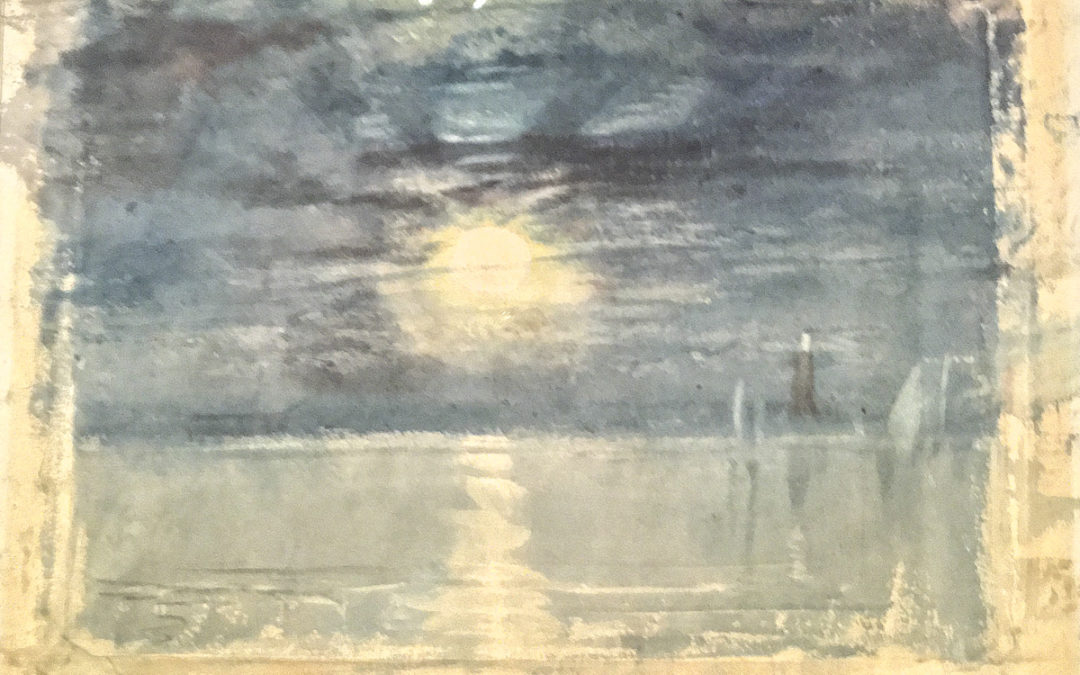(All of the photos in this article were taken with my iPhone 6, so the quality is not great, unless otherwise stated).
This Summer of 2020, is bizarre and difficult for many people whose businesses are suffering through the current health crisis. Hopefully, it will be a unique summer and not become a long term new normal.
Here in the Paris area, with few people traveling abroad, there appear to be more French people around than usual at this time of the year. Almost no foreign tourists, but many French ones in the capital and/or Parisians who have not left on holiday.
Last week I got dressed up and made up ( a rare occurrence these days) for a post birthday outing into the city. My mask hid this glorious lipstick, but like fancy lingerie, I knew I was wearing it.

I visited the Jaquemart André Museum with my closest friend, where there is currently an exhibition of Turner’s watercolours. We had planned to go earlier in the year for her birthday, but the infamous virus stopped that, so we finally made it to celebrate my birthday.
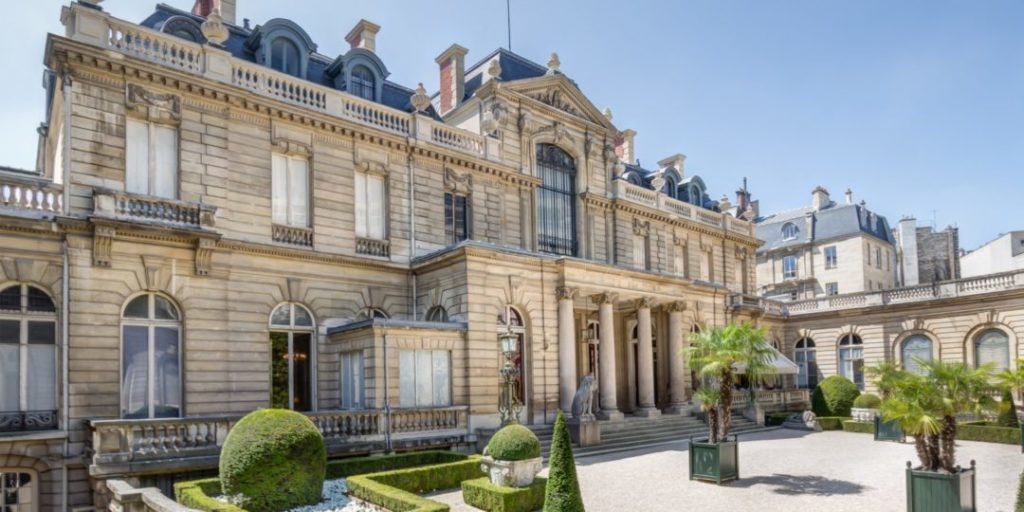
Above photo from the museum website.
We were expecting the exhibition to be fairly empty, but not at all, there was quite a crowd. It is necessary to book your tickets in advance and to wear a mask at all times. Mask wearing has almost become second nature to me as I’ve been keeping mine on since the beginning of March, so much so that I didn’t think to take it off for this photo in the jardin d’hiver.
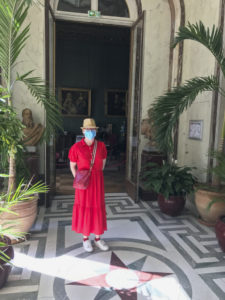
As you can probably see, I prefer being behind the camera.
The hôtel particulier, which now houses the museum was built at the end of the nineteenth century in Haussmann’s new Paris, for Edouard André, who came from a successful banking family. He was first a soldier, in an élite regiment appointed to the Emperor Napolean III, then a member of parliament, then art collector.

His wife Nélie Jacquemart, was an accomplished painter. The couple did not have children and devoted themselves to building their collection.

Self portrait by Nélie Jaquemart André, oil on canvas.
An hôtel particulier, is a French private mansion (also found in Switzerland and Belgium), a luxurious house built within a city, designed to be inhabited by only one family and their servants. Several of these private homes in Paris, were given by the families to the State, with the original décor and art collection remaining, to become museums.
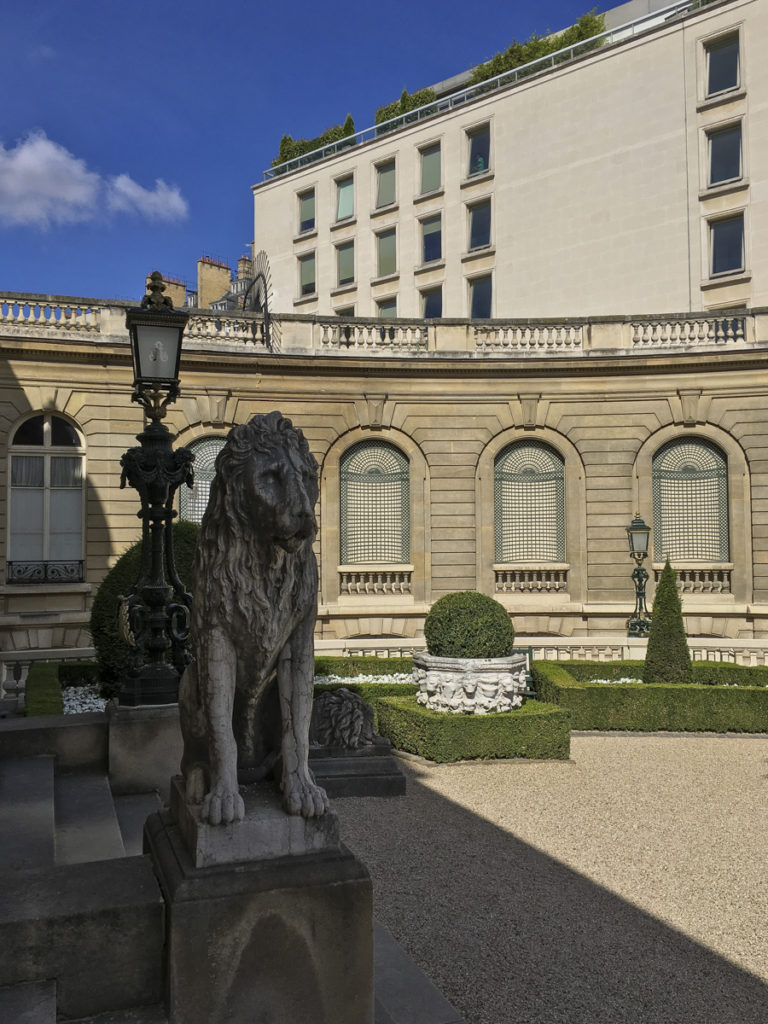
A fine pair of stone lions guard the entrance and at each visit here, I always admire the opulent bouquet in this Chinese vase, forgetting every time that the flowers are in fact artificial.
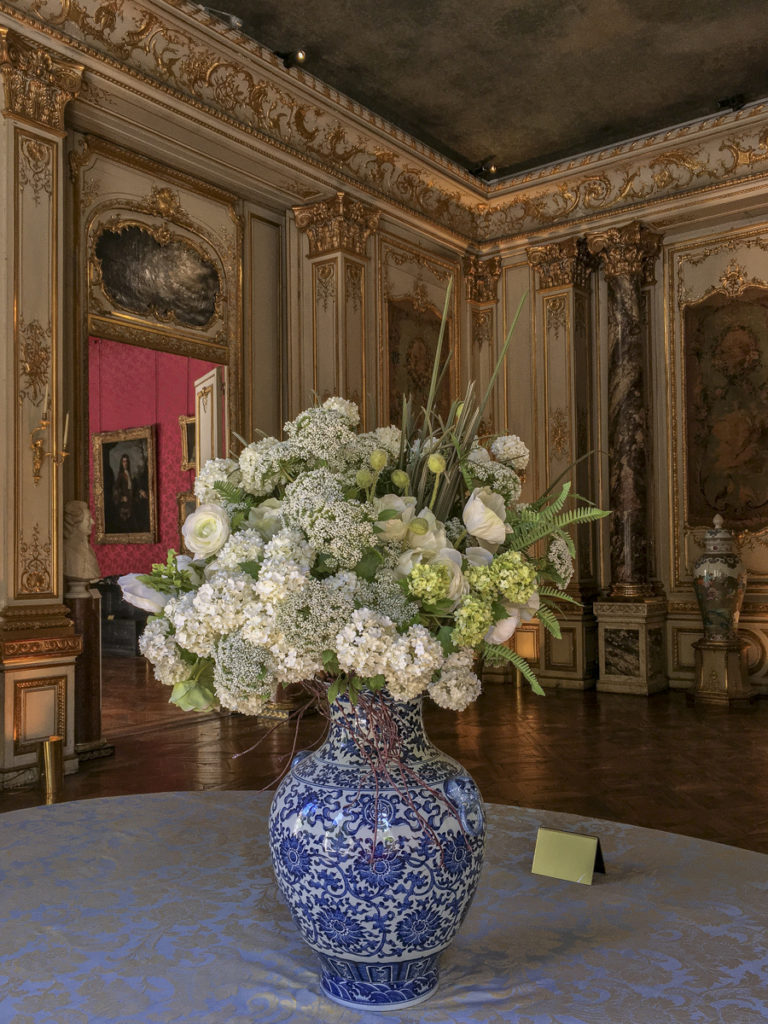
Excerpt from the museum website:
The retrospective of the works of Joseph Mallord William Turner (1775–1851) has been organized thanks to exceptional loans from the Tate Britain in London, which houses the largest collection of Turner’s works in the world.
Turner is one of the greatest representatives of the golden age of English watercolours. He experimented with the effects of light and transparency on English and European landscapes.
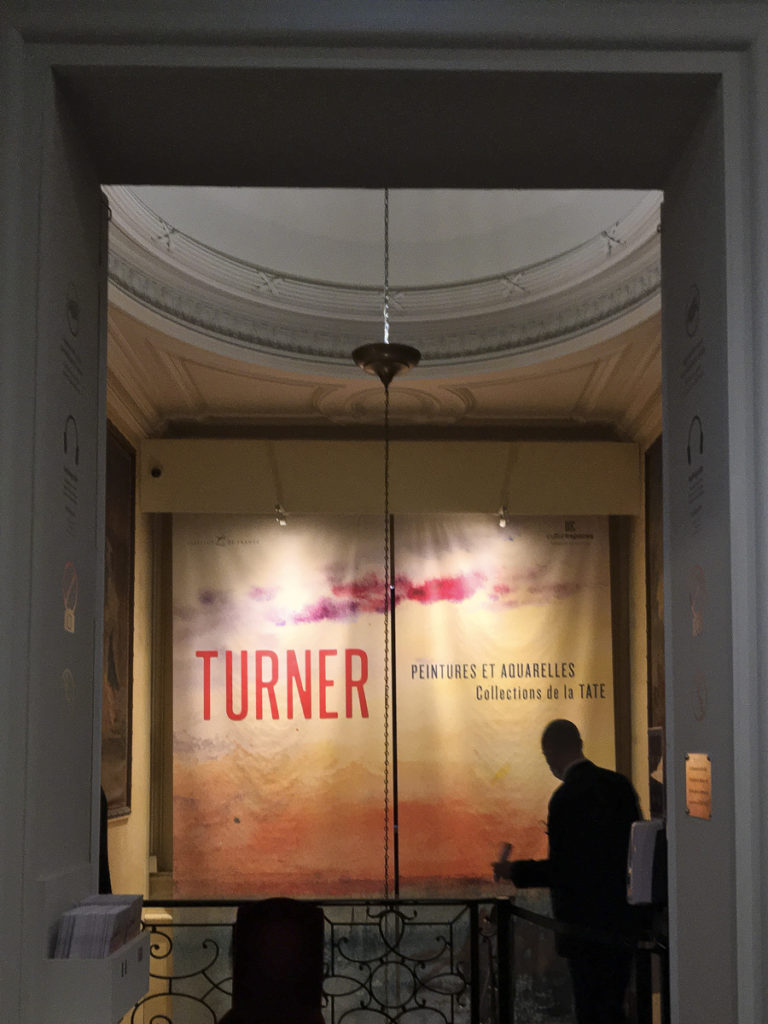
Turner, came from relatively humble beginnings. Born in London, he was the son of a barber who sold his son’s drawings by displaying them in the window of his shop. At first self-taught, he decided to become an artist at the age of fourteen, and he enrolled in the school of the Royal Academy of Art, the leading art society in Great Britain. Ambitious as well as talented, he was elected the youngest member of the Royal Academy eight years later, at the age of twenty-two. In 1807 he was appointed professor of perspective at the Royal Academy, a position he held for thirty years.
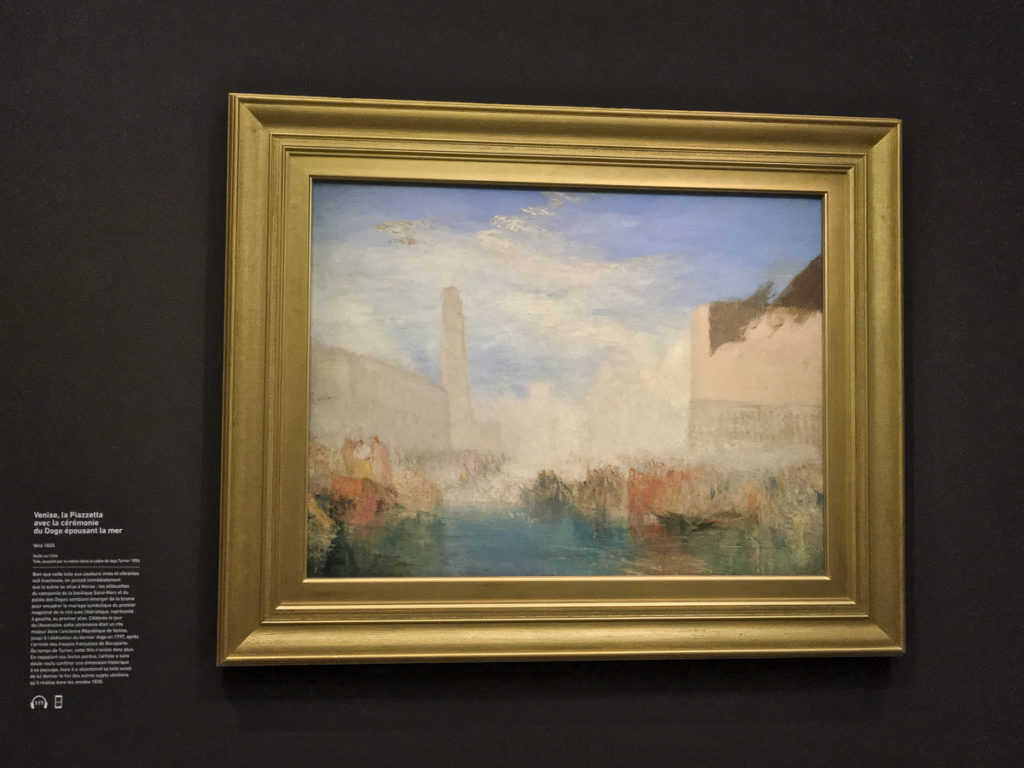
Venice, the Piazzetta with the Ceremony of the Doge Marrying the Sea, c.1835, oil on canvas.
He was an insatiable traveller and he gradually freed himself from the conventions of the pictorial genre and developed his own technique.
Turner kept a considerable collection of works for himself, which were stored in his house and studio. These sketches and watercolours, were more expressive and experimental than those he painted for the public.
The writer John Ruskin, who was one of the first to study the entire collection after the artist’s death, observed that Turner had executed most of these works for his ‘own pleasure and delight’. Now held in the Tate Britain, the collection highlights the incredible modernity of the great Romantic painter.
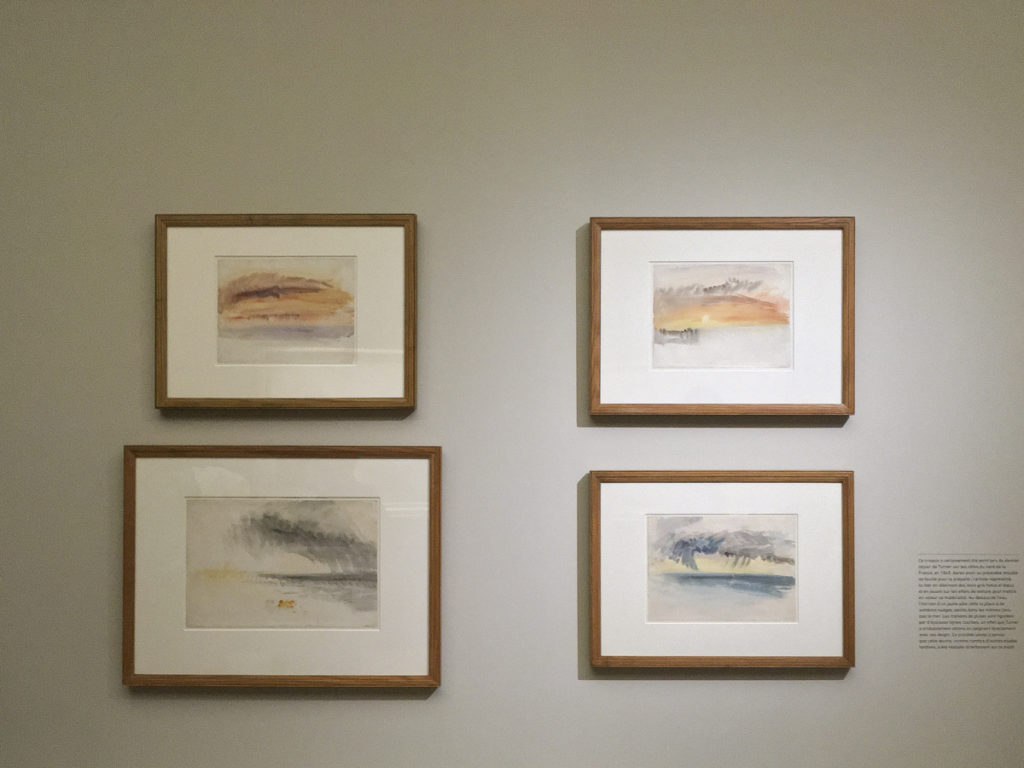
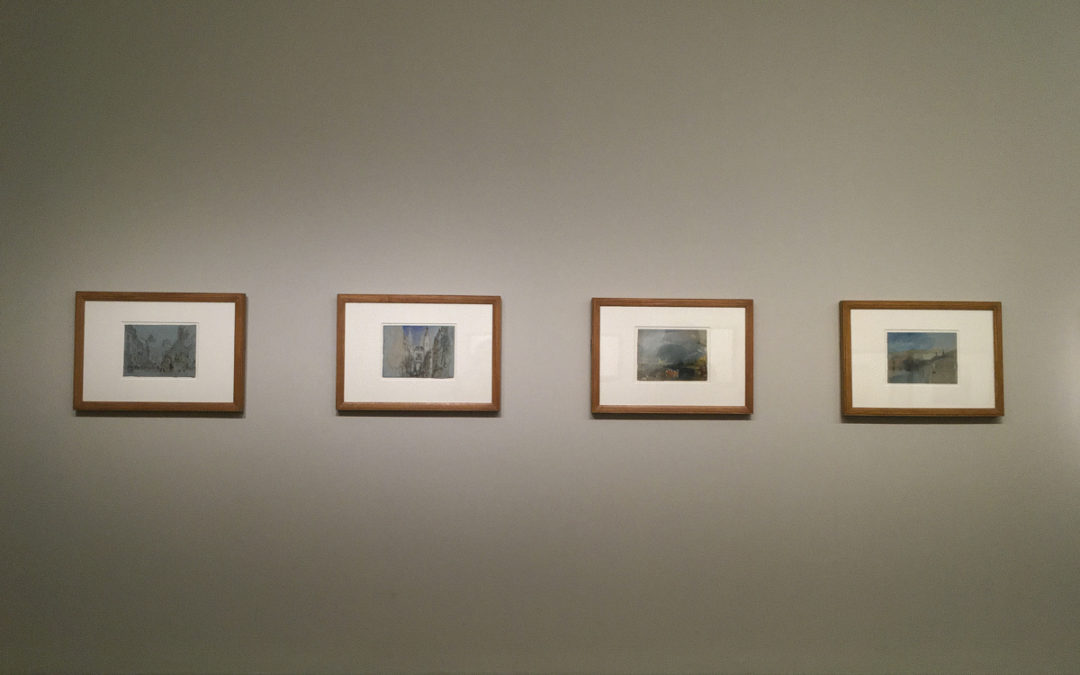
The exhibition is organised chronologically, which enables visitors to discover every phase of his artistic development: from his youthful works—which attest to a certain topographical realism—to his mature works, which were more radical and accomplished, as fascinating experiments with light and colour.
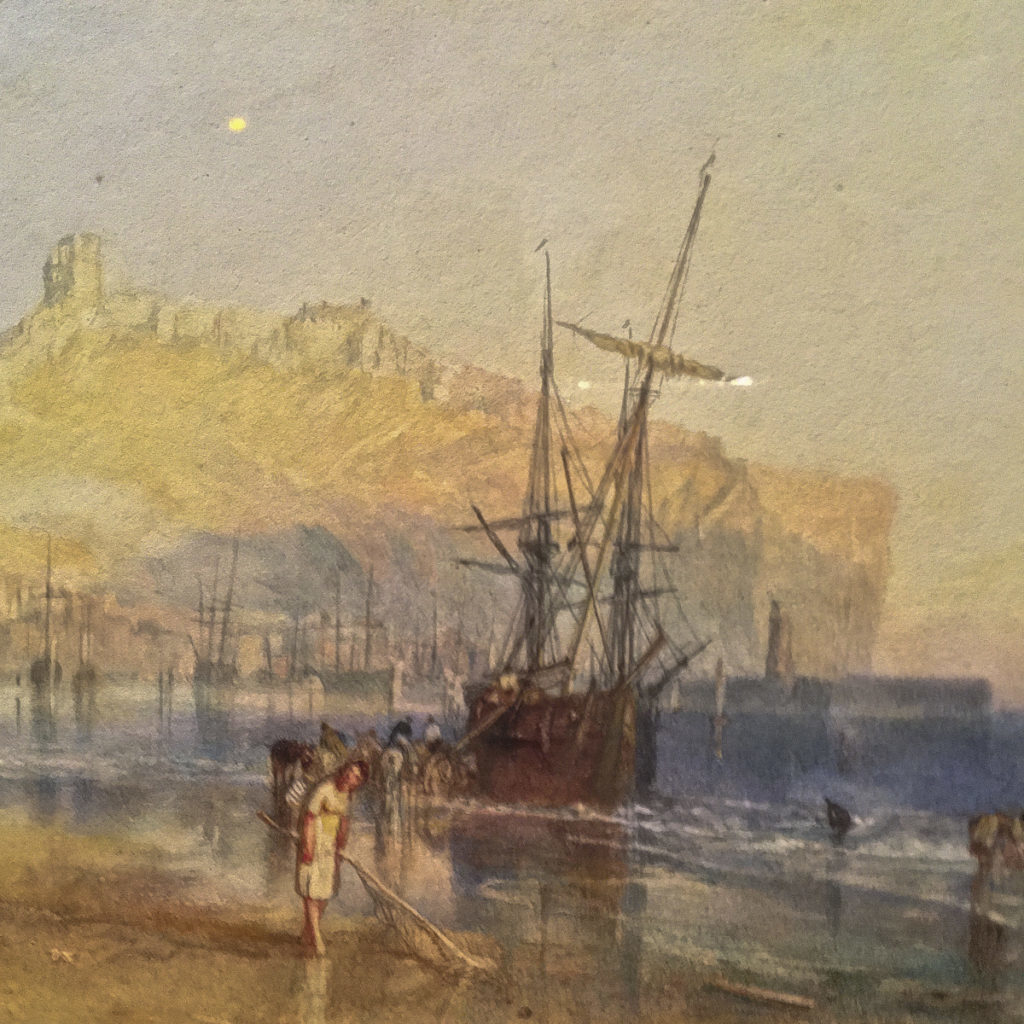
Stourhead: Lake View, watercolour and graphite on paper.
This is a small part of one of Turner’s earlier works, which shows his love of detail at that time.
To convey mood and atmosphere, Turner also experimented with painting techniques. In a rather unconventional way, he applied paint with a palette knife, a tool usually reserved for mixing colors. In this technique of applying paint thickly to a canvas, called impasto, the artwork often retains the mark of the brush or palette knife. Turner’s heavy application and thick paint create a textured surface that allows the raised areas on the canvas to catch light.

Turner was one of the first painters to use white canvas and was much criticized for this departure from tradition at the time.
He experimented with a wide variety of pigment. He used pigments like carmine, bright red, despite knowing that they were not long-lasting, and went against the advice of contemporary experts. As a result, many of his colours have now faded. Ruskin complained at how quickly his work decayed; Turner was indifferent to posterity and chose materials that looked good when freshly applied.
Turner grew one thumbnail long to use for scraping his paintings, to create highlights by exposing the white paper fibres, as shown below in the reflection of the moon in the water.
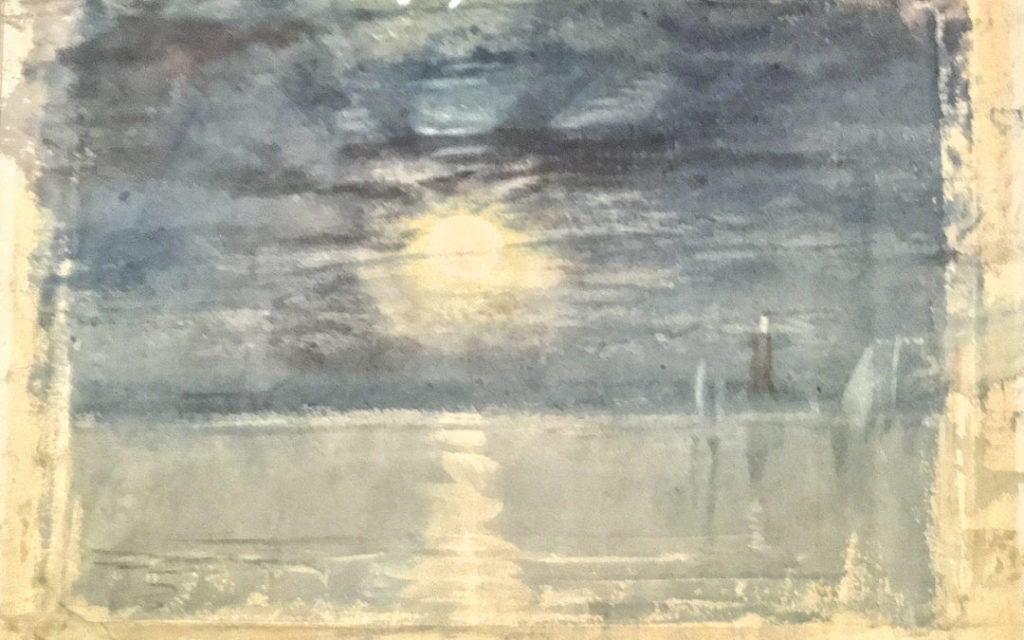
A box of the artist’s pigments, which he would have mixed himself to make his paints.
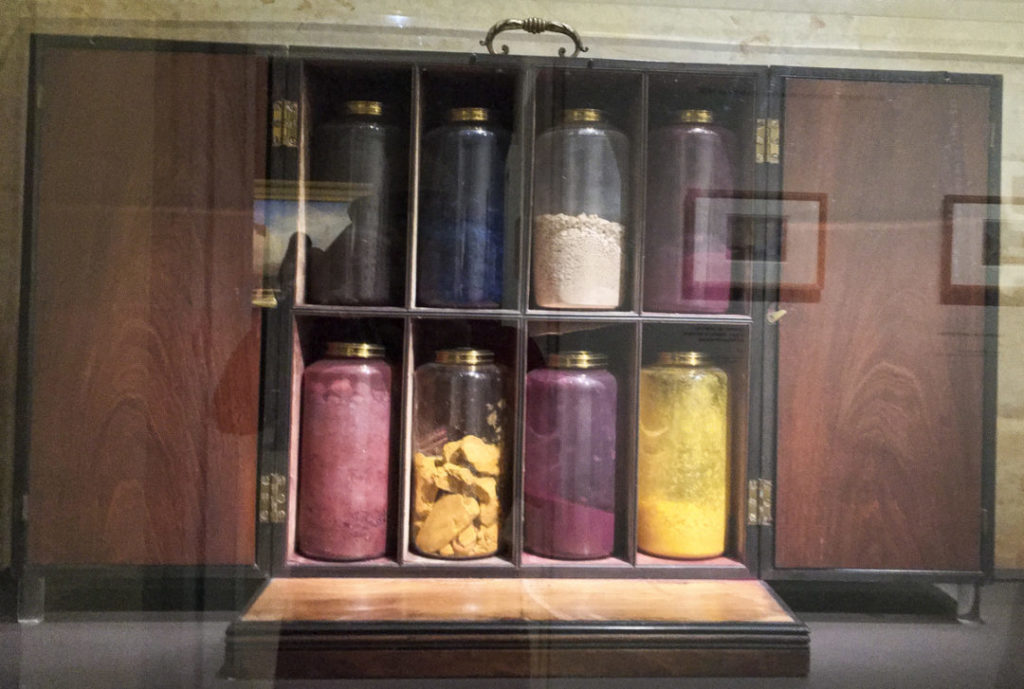
Intensely private, eccentric and reclusive, Turner was a controversial figure throughout his career. He did not marry, but fathered two daughters with his housekeeper Sarah Danby.
As Turner grew older, he became more eccentric. He had few close friends except for his father, who lived with him for 30 years and worked as his studio assistant. His father’s death in 1829 had a profound effect on him, and thereafter he was subject to bouts of depression. He died in London in 1851 from cholera, aged 76. Turner is buried in Saint Paul’s Cathedral, London.

“My work consists of painting what I see and not what I know is there”.
J.W.M. Turner.
This advice is one of the first things that any art teacher will tell you and I’ve heard it many times.
The intensity of colour and his interest in evanescent light, not only placed Turner’s work in the vanguard of English painting, but he also greatly influenced art in France; the Impressionists, particularly Claude Monet, carefully studied his techniques.
He is also generally regarded as a precursor of abstract painting.
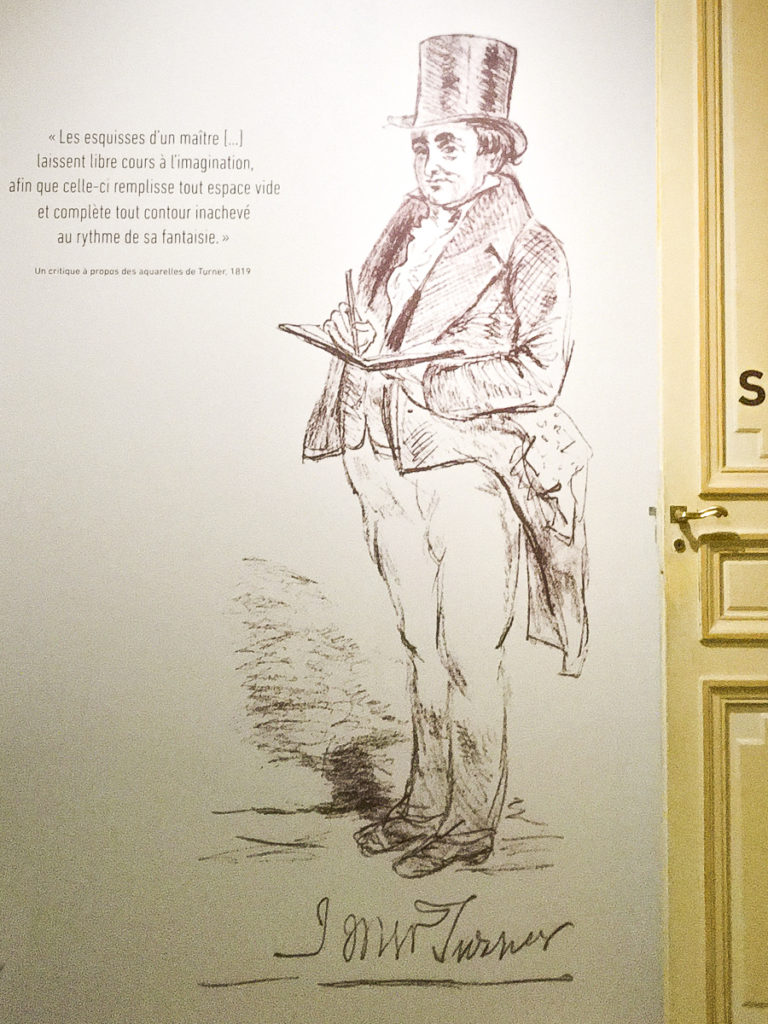
“The work of a master …… frees your imagination to fill empty spaces and complete unfinished lines, as you fancy”.
A critic writing about Turner’s watercolours 1819.
I’ve always been fascinated by Turner’s treatement of light and indeed I often try to create the same evanescent misty ambiance in my own abstract photography, as in this photograph of the burnt pier in Brighton, UK, (Brighton 1).

In my next post, coming soon (truly), I will share with you a series of COVID self portraits that I created during lockdown and which I have sent off to various competitions. Intrigued ?
* * * * * * * * * *
Can you help me widen my circle of readers?
If you know people who you think would enjoy my site, please share this post on your social media or by email.
It’s easy, just copy and paste this link:
https://henriericher.com/blog/
* * * * * * *
Thank you for visiting.
Take Care,
Henrie
XOX
